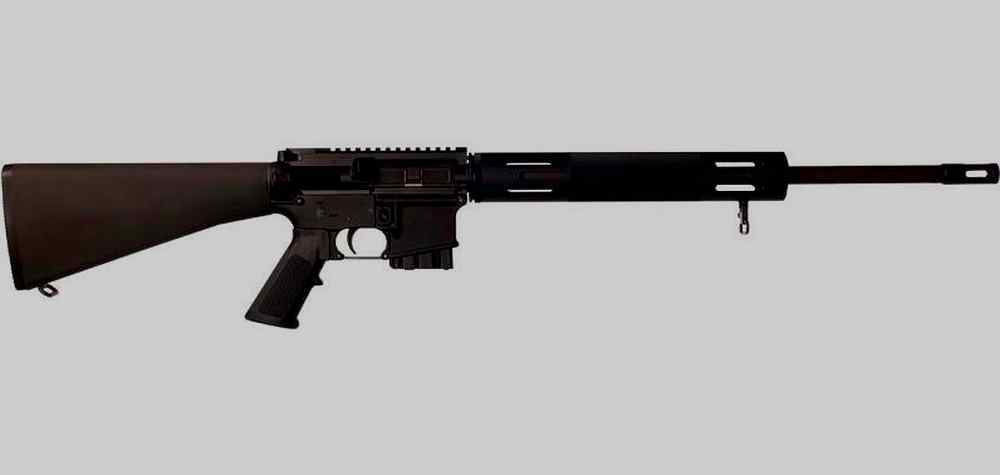Crafting the Perfect Cartridge
Benefits of Reloading AR15 Ammunition
Reloading ammunition for your AR15 rifle can be a rewarding and cost-effective way to ensure you always have a steady supply of high-quality cartridges. By taking the time to craft your own ammunition, you can tailor each round to your specific needs and preferences, resulting in improved accuracy and performance on the range or in the field.
One of the key benefits of reloading AR15 ammunition is the ability to customize your loads to match your shooting style and the requirements of your rifle. By experimenting with different bullet weights, powder charges, and primers, you can fine-tune your cartridges to achieve optimal performance and consistency. This level of customization is especially important for competitive shooters or hunters who demand precision and reliability from their ammunition.
In addition to performance benefits, reloading your own ammunition can also save you money in the long run. While there is an initial investment required to purchase reloading equipment and components, the cost per round of reloaded ammunition is typically lower than factory-made cartridges. This cost savings can add up over time, especially for shooters who go through a large volume of ammunition on a regular basis.
Another advantage of reloading AR15 ammunition is the ability to recycle and reuse spent brass casings. By collecting and inspecting your fired cases, you can identify any signs of wear or damage and discard any that are no longer safe to use. This not only helps to reduce waste and minimize environmental impact but also allows you to control the quality of the brass you use in your reloads.
Reloading ammunition also gives you the flexibility to experiment with different bullet types and designs to find the best match for your shooting needs. Whether you prefer hollow points for self-defense or match-grade bullets for precision shooting, reloading allows you to tailor your ammunition to suit your specific requirements. This level of customization can lead to improved accuracy and consistency, giving you a competitive edge on the range or in the field.
Furthermore, reloading your own ammunition can be a fun and rewarding hobby that allows you to learn more about the mechanics of firearms and ballistics. By taking the time to research and experiment with different reloading techniques, you can develop a deeper understanding of how ammunition is made and how it performs in different shooting scenarios. This knowledge can not only enhance your shooting skills but also give you a greater appreciation for the craftsmanship and precision that goes into creating high-quality cartridges.
In conclusion, reloading AR15 ammunition offers a wide range of benefits for shooters who are looking to improve their performance, save money, and enjoy a rewarding hobby. By customizing your loads to match your shooting style and rifle requirements, you can achieve greater accuracy and consistency on the range or in the field. Additionally, reloading allows you to recycle brass casings, experiment with different bullet types, and develop a deeper understanding of firearms and ballistics. Whether you are a competitive shooter, a hunter, or just a firearms enthusiast, reloading your own ammunition can be a valuable skill that enhances your shooting experience.
Step-by-Step Guide to Reloading AR15 Ammunition
Reloading ammunition for your AR15 rifle can be a rewarding and cost-effective way to ensure you always have a steady supply of high-quality cartridges. By crafting your own ammunition, you have the ability to tailor each round to your specific needs and preferences, resulting in improved accuracy and performance on the range or in the field.

To begin the process of reloading AR15 ammunition, you will need a few essential tools and components. These include a reloading press, dies, shell holder, powder scale, calipers, primers, powder, bullets, and brass casings. It is important to carefully follow all safety guidelines and instructions provided by the manufacturer of each component to ensure a safe and successful reloading process.
The first step in reloading AR15 ammunition is to clean and inspect your brass casings. This involves removing any dirt, debris, or residue from the casings using a tumbler or other cleaning method. Inspect each casing for signs of damage or wear, as damaged casings can lead to malfunctions or unsafe conditions when firing.
Next, you will need to resize and deprime the casings using a resizing die and shell holder. This step ensures that the casings are properly shaped and ready to accept a new primer. After resizing, it is important to trim the casings to the correct length using a case trimmer to ensure consistent performance and accuracy.
Once the casings have been resized and trimmed, it is time to prime them using a priming tool and the appropriate primers for your specific load. Carefully seat each primer into the casing to ensure proper ignition when the round is fired. It is important to handle primers with care and follow all safety precautions to prevent accidents or mishaps.
After priming, the next step in the reloading process is to charge the casings with the correct amount of powder using a powder scale and funnel. It is crucial to use the correct type and amount of powder for your specific load to prevent dangerous overpressure situations. Double-check your measurements and always follow the recommended load data provided by the powder manufacturer.
Once the casings have been charged with powder, it is time to seat the bullets using a bullet seating die. Carefully align each bullet with the casing and press it into place to the correct depth. Proper bullet seating is essential for accuracy and consistency when firing your AR15 rifle.
Finally, it is important to crimp the casings using a crimp die to secure the bullet in place and prevent movement during firing. A proper crimp ensures that the cartridge functions reliably and consistently when fired.
In conclusion, reloading AR15 ammunition is a rewarding and cost-effective way to ensure you always have a steady supply of high-quality cartridges for your rifle. By following these step-by-step instructions and using the proper tools and components, you can craft the perfect cartridge for your specific needs and preferences. Remember to always follow safety guidelines and instructions provided by the manufacturer to ensure a safe and successful reloading process. Happy reloading!
Choosing the Right Components for Reloading AR15 Ammunition
Reloading ammunition for your AR15 can be a rewarding and cost-effective way to ensure you always have a steady supply of high-quality cartridges. However, it’s important to choose the right components to craft the perfect cartridge for your rifle. In this article, we’ll discuss the key components you’ll need to consider when reloading ammunition for your AR15.
One of the most important components to consider when reloading ammunition for your AR15 is the brass casing. Brass casings are the most commonly used type of casing for reloading ammunition, as they are durable and can be reloaded multiple times. When choosing brass casings for your AR15 ammunition, it’s important to ensure they are the correct size and shape for your rifle. Additionally, you’ll want to inspect the casings for any signs of damage or wear before reloading them.
Next, you’ll need to select the right primer for your AR15 ammunition. Primers are small metal cups that contain a small amount of explosive material. When the firing pin strikes the primer, it ignites the powder in the casing, causing the bullet to be fired. There are two main types of primers: small rifle primers and large rifle primers. It’s important to choose the correct primer size for your specific AR15 rifle to ensure proper ignition and reliable performance.
After selecting the brass casings and primers for your AR15 ammunition, the next component to consider is the powder. Powder is the propellant that ignites when the primer is struck, creating the force needed to propel the bullet out of the casing and down the barrel of the rifle. When choosing powder for your AR15 ammunition, it’s important to select a powder that is compatible with your specific rifle and bullet weight. Additionally, you’ll want to carefully measure and weigh the powder to ensure consistent and accurate loads.
Finally, you’ll need to select the right bullet for your AR15 ammunition. Bullets come in a variety of shapes, sizes, and weights, each designed for specific purposes and shooting applications. When choosing a bullet for your AR15 ammunition, consider factors such as bullet weight, shape, and construction. It’s important to select a bullet that is compatible with your rifle’s twist rate and barrel length to ensure optimal accuracy and performance.
In conclusion, choosing the right components for reloading AR15 ammunition is essential to crafting the perfect cartridge for your rifle. By carefully selecting brass casings, primers, powder, and bullets that are compatible with your specific AR15 rifle, you can create high-quality ammunition that meets your shooting needs and preferences. Remember to always follow proper reloading procedures and safety precautions to ensure a safe and successful reloading experience. Happy reloading!
Safety Tips for Reloading AR15 Ammunition
Reloading ammunition for your AR15 can be a rewarding and cost-effective way to ensure you always have a steady supply of high-quality cartridges. However, it’s important to approach the process with caution and attention to detail to ensure your safety and the reliability of your ammunition.
One of the most critical safety tips for reloading AR15 ammunition is to always follow the manufacturer’s guidelines for the specific components you are using. This includes using the correct type and amount of powder, the right primer, and the appropriate bullet weight and type. Deviating from these guidelines can result in dangerous malfunctions or even catastrophic failures.
It’s also essential to inspect your brass cases carefully before reloading them. Look for signs of damage, such as cracks or splits, as well as any signs of excessive wear. Using damaged brass can lead to dangerous pressure spikes when firing your ammunition, so it’s crucial to discard any cases that show signs of wear or damage.
When it comes to powder, always measure carefully and never exceed the maximum load specified by the manufacturer. Overloading your cartridges can result in dangerous pressure levels that can damage your firearm or cause injury to yourself or others. Invest in a reliable powder scale and measure each charge individually to ensure consistency and accuracy.
Properly seating your bullets is another critical aspect of reloading AR15 ammunition safely. Make sure the bullet is seated to the correct depth, as seating it too deeply or not deeply enough can affect accuracy and potentially cause dangerous pressure spikes. Use a reliable bullet seating die and follow the manufacturer’s guidelines for proper seating depth.
It’s also important to pay attention to the overall length of your cartridges. Ensuring that your cartridges are within the specified overall length range for your firearm is crucial for reliable feeding and chambering. Use a reliable cartridge overall length gauge to measure your cartridges and make any necessary adjustments to ensure they meet the specified length requirements.
Finally, always wear appropriate safety gear when reloading ammunition, including safety glasses and hearing protection. Accidents can happen, and it’s essential to protect yourself from potential injury. Additionally, make sure your reloading area is well-ventilated to prevent the buildup of potentially hazardous fumes from powder and primers.
By following these safety tips for reloading AR15 ammunition, you can enjoy the satisfaction of crafting your own high-quality cartridges while ensuring your safety and the reliability of your ammunition. Remember to always follow the manufacturer’s guidelines, inspect your brass cases carefully, measure your powder accurately, seat your bullets properly, pay attention to overall cartridge length, and wear appropriate safety gear. With attention to detail and a commitment to safety, you can enjoy the benefits of reloading your own ammunition with confidence and peace of mind.
Common Mistakes to Avoid When Reloading AR15 Ammunition
Reloading ammunition for your AR15 can be a rewarding and cost-effective way to ensure you always have a steady supply of high-quality cartridges. However, it’s important to approach the process with caution and attention to detail to avoid common mistakes that can compromise the safety and performance of your ammunition.
One of the most common mistakes that reloaders make is failing to properly inspect and clean their brass casings before reloading. It’s essential to carefully inspect each casing for signs of damage or wear, such as cracks, dents, or splits. Cleaning the casings thoroughly with a brass tumbler or ultrasonic cleaner will help ensure that they are free of dirt, debris, and residue that could affect the performance of the cartridge.
Another common mistake is using the wrong type or amount of powder when reloading ammunition. It’s crucial to consult reliable reloading manuals or guides to determine the correct powder charge for your specific cartridge and bullet combination. Using too much or too little powder can result in dangerous overpressure or underpowered rounds that may not cycle properly in your AR15.
Inconsistent bullet seating depth is another common mistake that can affect the accuracy and performance of your reloaded ammunition. It’s important to use a reliable bullet seating die and consistently set the depth to the recommended specifications for your specific bullet and cartridge. Failing to seat the bullet to the correct depth can result in erratic velocities and poor accuracy.
Failure to properly crimp the bullet into the casing is another common mistake that can lead to reliability issues with your reloaded ammunition. A proper crimp ensures that the bullet is securely held in place during firing and prevents setback, which can cause dangerous overpressure. Using a reliable crimp die and following the manufacturer’s recommendations for crimping will help ensure that your cartridges are safe and reliable.
Neglecting to properly resize and trim your brass casings is another common mistake that can affect the performance of your reloaded ammunition. Resizing the casings ensures that they will chamber properly in your AR15, while trimming them to the correct length helps ensure consistent overall cartridge length. Failing to resize or trim your brass can result in feeding and extraction issues that can affect the reliability of your ammunition.
Finally, failing to properly label and store your reloaded ammunition is a common mistake that can lead to confusion and potentially dangerous mix-ups. It’s important to clearly label each batch of reloaded ammunition with the date, cartridge type, powder charge, and bullet weight. Storing your ammunition in a cool, dry place away from heat and moisture will help ensure that it remains safe and reliable for future use.
In conclusion, reloading ammunition for your AR15 can be a rewarding and cost-effective way to ensure you always have a steady supply of high-quality cartridges. By avoiding common mistakes such as failing to properly inspect and clean brass casings, using the wrong type or amount of powder, inconsistent bullet seating depth, improper crimping, neglecting to resize and trim brass casings, and failing to properly label and store reloaded ammunition, you can craft the perfect cartridge that is safe, reliable, and accurate. With attention to detail and a commitment to following best practices, you can enjoy the satisfaction of creating custom ammunition that meets your specific needs and preferences.




